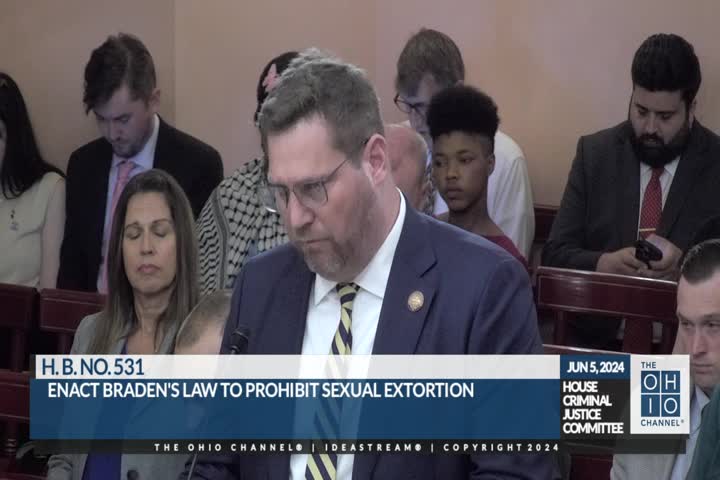Ohio lawmakers push for primary seat belt law to save lives
June 05, 2024 | Criminal Justice, House of Representatives, Committees, Legislative, Ohio

This article was created by AI summarizing key points discussed. AI makes mistakes, so for full details and context, please refer to the video of the full meeting. Please report any errors so we can fix them. Report an error »

In a recent session of the Ohio House Criminal Justice Committee, lawmakers discussed two significant pieces of legislation aimed at enhancing public safety. The first, House Bill 530, aims to address urgent concerns regarding traffic safety, while House Bill 536 seeks to make seat belt violations a primary offense.
During the hearing for House Bill 530, a passionate call was made for swift passage of the bill, emphasizing the need to prevent future tragedies related to traffic incidents. The urgency of the matter was underscored by the testimony provided, which highlighted the critical nature of the legislation.
House Bill 536, presented by Representative Miller, proposes that seat belt violations be classified as a primary offense, a move intended to increase compliance with Ohio's existing seat belt laws. Currently, Ohio's seat belt usage rate stands at approximately 80%, significantly lower than the national average of 91.6%. Miller cited statistics indicating that a substantial percentage of traffic fatalities and injuries occur among individuals not wearing seat belts, arguing that making violations a primary offense could lead to higher compliance rates and ultimately save lives.
The discussion also touched on concerns regarding potential racial profiling associated with increased traffic stops. Vice Chair Williams raised the issue of disproportionate impacts on minority communities, questioning whether the bill could exacerbate existing disparities in traffic enforcement. In response, Miller acknowledged these concerns and noted ongoing discussions with the Ohio Legislative Black Caucus to address them. He emphasized that the primary goal of the legislation is to enhance traffic safety for all Ohioans.
The committee also explored the implications of reporting requirements related to traffic stops under the proposed law. It was clarified that, similar to existing traffic offenses, data collection would only occur when a citation is issued, not for every traffic stop.
As the committee concluded its hearings, the discussions highlighted the balance lawmakers seek to strike between improving public safety and addressing concerns about equitable enforcement of traffic laws. The fate of these bills remains uncertain as they move through the legislative process.
During the hearing for House Bill 530, a passionate call was made for swift passage of the bill, emphasizing the need to prevent future tragedies related to traffic incidents. The urgency of the matter was underscored by the testimony provided, which highlighted the critical nature of the legislation.
House Bill 536, presented by Representative Miller, proposes that seat belt violations be classified as a primary offense, a move intended to increase compliance with Ohio's existing seat belt laws. Currently, Ohio's seat belt usage rate stands at approximately 80%, significantly lower than the national average of 91.6%. Miller cited statistics indicating that a substantial percentage of traffic fatalities and injuries occur among individuals not wearing seat belts, arguing that making violations a primary offense could lead to higher compliance rates and ultimately save lives.
The discussion also touched on concerns regarding potential racial profiling associated with increased traffic stops. Vice Chair Williams raised the issue of disproportionate impacts on minority communities, questioning whether the bill could exacerbate existing disparities in traffic enforcement. In response, Miller acknowledged these concerns and noted ongoing discussions with the Ohio Legislative Black Caucus to address them. He emphasized that the primary goal of the legislation is to enhance traffic safety for all Ohioans.
The committee also explored the implications of reporting requirements related to traffic stops under the proposed law. It was clarified that, similar to existing traffic offenses, data collection would only occur when a citation is issued, not for every traffic stop.
As the committee concluded its hearings, the discussions highlighted the balance lawmakers seek to strike between improving public safety and addressing concerns about equitable enforcement of traffic laws. The fate of these bills remains uncertain as they move through the legislative process.
View full meeting
This article is based on a recent meeting—watch the full video and explore the complete transcript for deeper insights into the discussion.
View full meeting
